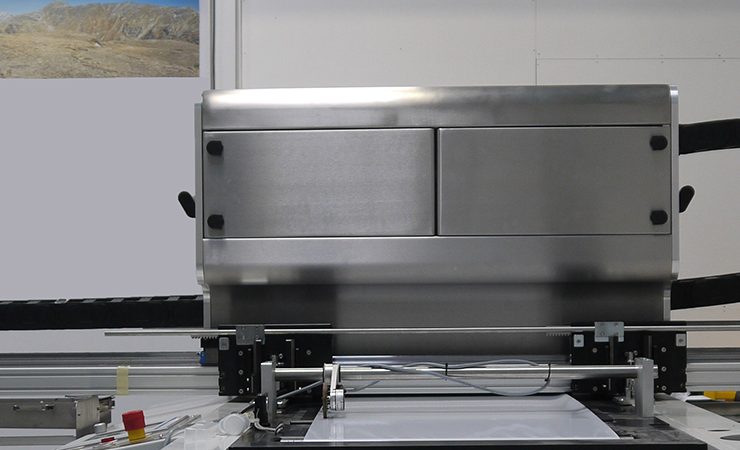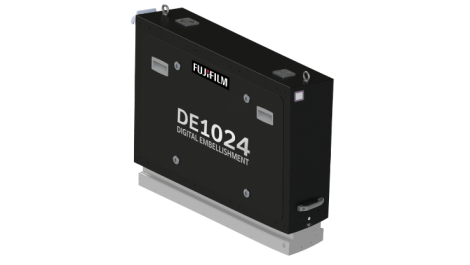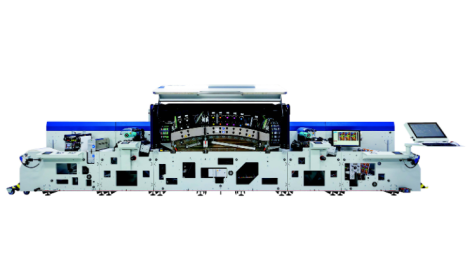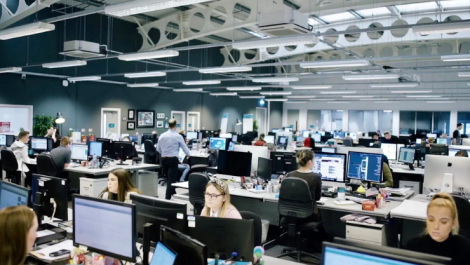Paddy O’Hara, director of business development at Industrial Inkjet, discusses the principles and technicalities of building a working inkjet/hybrid press, and the necessity for full and proper integration of the modules and components to get saleable prints off a press.
‘Hybrid technology is the latest buzz word for the digital label and packaging market. But what does ‘going hybrid’ really mean, and are you open to the changes not only in the physical way you work but also the commercial?
‘At Industrial Inkjet (IIJ), we recognise that there are a number of technical and commercial challenges involved in making a hybrid inkjet solution work. On any solution we sell, we take responsibility to ensure these are addressed, through our knowledge and flexible approach. However, it’s worth taking the time to understand what these challenges are in order to appreciate what goes in to our solutions.
‘Firstly, it’s all about preparation. A hybrid solution means combining multiple technologies, so ensuring they complement each other rather than detracting from each other, has to be the most important concern. Inkjet is a non-contact technology, so the print quality is as much about the interaction of the ink and media as it is the equipment that delivers it. For this reason, IIJ spends a lot of time testing this through a series of print samples to ensure that the final application is capable of delivering the desired quality at a cost level that justifies the move to hybrid. This may involve pre-treatment, material coating, flexo over-varnishing, alternative inks or different drop lay down strategy. Finding the correct recipe, or combination of processes is key to the success of the whole solution. Similarly, optimising dwell times between printing and curing is important and has a huge impact on the final design solution.
‘When it comes to mechanical integration, the control of the substrate below the inkjet print module typically needs to be far more precise than that required for other processes. That is often down to the quality of existing analogue equipment, so again preparation is important, but also keeping the solution as simple as it needs to be, rather than following market fashions plays a big part.
‘Possibly the biggest issue when integrating inkjet onto any web press is how to cope with web wander or media stretch. IIJ modules are deliberately compact in the web direction. This minimises the effect of web wander and stretch, allowing them to be fitted to equipment that might otherwise need significant modification to achieve the accuracy required for inkjet printing. Even then, before a project is progressed, a site survey is undertaken to measure the web performance and establish how best to improve it if necessary. An additional consideration is where and how to attach the encoder to ensure accurate colour registration. At IIJ we try to fit this as close to the print unit as possible, and ideally running on the substrate to eliminate slip between roller and material.
‘Most UV web presses are fitted with relatively high-powered UV curing systems, and the assumption is often that these can be used for the inkjet device. However, there are two major flaws in this assumption. Firstly, they are designed for a contact printing process that is largely resilient to dwell time between print and cure. That’s not the case with inkjet, so in order to make the best of the system, the UV curing system needs to be fitted at the optimum distance from the print module (as defined in the samples process), and importantly with positional adjustment to allow for printing at different speeds or on materials with different wetting characteristics. Secondly, flexo inks are easier to cure than inkjet inks. For inkjet a lower viscosity is required, meaning shorter chain components that need more UV curing. So almost certainly a different, more appropriate lamp will be required.
‘Another key question is which system will be master and which should be slave. On analogue systems they are normally mechanically connected so once the first (key) print station is set up the subsequent processes slot in to register with some small mechanical adjustments. How to add a non-contact system to this is not always obvious, some systems will use the inkjet at a ‘white paper’ stage and generate a reference mark to which the analogue processes are aligned, others use a pre-printed register mark to trigger the inkjet, and others trigger off the die cut. Basically, it’s not a one-solution-fits-all situation, but normally a solution can be found.
‘What people often forget about is how they calculate how much they charge for the print. The cost per print is dominated by the ink usage and this can vary hugely. For a label containing only black text, the cost of the ink will only be a small fraction of the cost for a full colour label. This can also be heavily influenced by the material to be printed on to and the colour profile used.
‘So, do you pre-flight each job to give an accurate price or maybe apply an average cost and hope all your customers want low coverage product? This of course will depend on the type of end customer concerned, as well as the number and run length of the jobs undertaken. This often leads to a different way of working which may take your sales team time to adapt to. Added to this, whilst hybrid is considered by many the best of both worlds, as it combines analogue with digital technology, there might be limitations on minimum run length and job turn around time that the end customer would not expect from a purely digital process.
‘Finally, there is the issue of who runs the press. Press operators’ skills sets are of course a wide spectrum, but most will be very comfortable with the mechanical operation and adjustments necessary on an analogue press, but to take on the software skills that can be required on a hybrid system, or the care and attention needed to ensure an inkjet solution remains in top condition, could be daunting. Here training is key, and a good operator will thrive on the challenge, but there could be some resistance to change.
‘So, as always, the devil is in the detail. Going into a hybrid project with your eyes open is the only way to do it. As a responsible solution provider, IIJ ensures enough preparation and consultation goes into it prior to providing the system, reducing the risks and maximising the benefits. If done correctly a digital-analogue hybrid solution can be the best of both worlds.’
Read more about the market for hybrid printing here, and in the January/February issue of Digital Labels & Packaging






